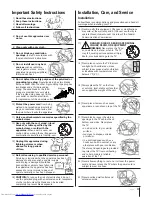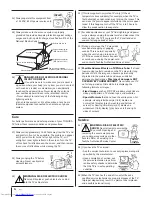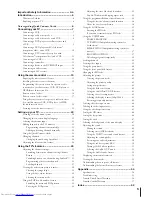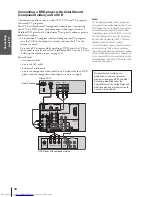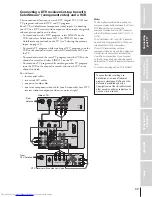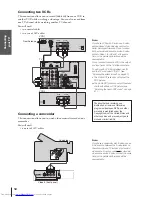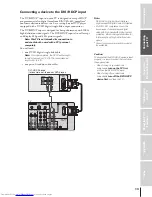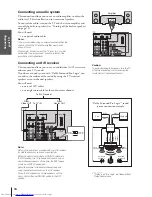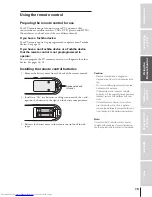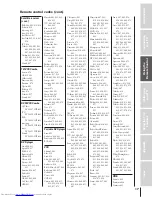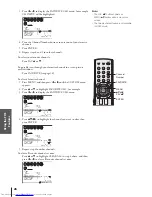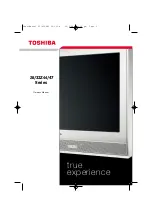
Intr
oduction
Connecting
y
our T
V
Using the
Remote Contr
ol
Setting up
y
our T
V
Using the T
V’s
F
eatur
es
Appendix
Index
12
Connecting two VCRs
This connection allows you to record (dub/edit) from one VCR to
another VCR while watching a videotape. You can also record from
one TV channel while watching another TV channel.
You will need:
• two coaxial cables
• two sets of A/V cables
IN from ANT
VIDEO AUDIO
OUT to TV
CH 3
L
R
CH 4
IN
OUT
OUT
IN
ANT( 75 )
ANT-1
ANT-2
OUT
L/
MONO
AUDIO
VIDEO
S-VIDEO
VIDEO 1
P
B
P
R
Y
COLOR
STREAM HD-1
COLOR
STREAM HD-2
R
VIDEO
S-VIDEO
VIDEO 2
L/
MONO
AUDIO
VIDEO
R
L
VAR
AUDIO
R
AUDIO
R
L
P
B
P
R
Y
AUDIO
R
L
L/
MONO
AUDIO
R
ON OFF
AUDIO CENTER
CHANNEL IN
DVI/HDCP IN
R
AUDIO
L
VIDEO AUDIO
CH 3
L
R
CH 4
IN
OUT
Connecting a camcorder
This connection allows you to watch video materials recorded on a
camcorder.
You will need:
• one set of A/V cables
DEMO
MENU
TV/VIDEO
V
VIDEO
AUDIO
OUT
L
R
VIDEO-3 IN
VIDEO
S-VIDEO
AUDIO
L/MONO
R
VCR1
From Antenna
TV
**
*
Camcorder
Video-3 (front panel)
VCR2
Note:
If you have VCRs with S-video, use S-video
cables instead of standard video cables for
better picture performance. Do not connect
both a standard video cable and an S-video
cable to Video 1 (or Video 2) at the same
time, or the picture performance will be
unacceptable.
Do not connect the same VCR to the output
and input jacks on the TV at the same time.
To dub or edit, VCR 2 must select Line IN,
and the TV must select VIDEO 1 (see
“Selecting the antenna input” on page 21).
*
The Video OUT jack does not output the
POP picture.
**
The Audio OUT jacks can output the sound
of either the Main or POP picture (see
“Selecting the Audio OUT sound” on page
51).
Note:
If you have a camcorder with S-video, use an
S-video cable between the S-video jacks on
the camcorder and TV instead of a standard
video cable. Do not connect both a standard
video cable and an S-video cable at the same
time, or the picture performance will be
unacceptable.
The unauthorized recording, use,
distribution, or revision of television
programs, videotapes, DVDs, and other
materials is prohibited under the
Copyright Laws of the United States and
other countries, and may subject you to
civil and criminal liability.



